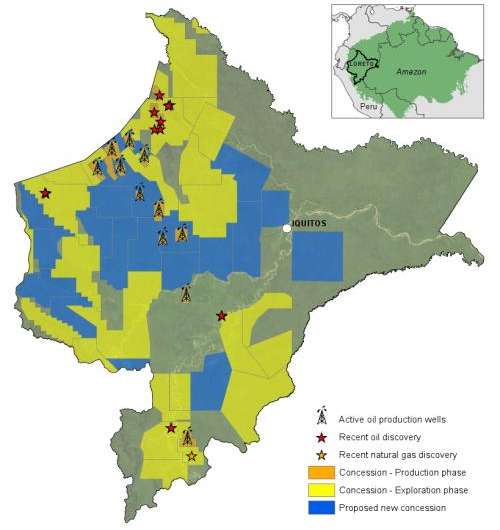Potential of best practice to reduce impacts from oil and gas projects in the Amazon

Hydrocarbon exploration and production continues to press into the most remote corners of the western Amazon, one of the most biologically and culturally diverse zones on Earth. A new best practice framework that combines technical engineering criteria with ecological and social concerns could reduce the negative environmental impacts of such development, according to research published May 1 in the open access journal PLOS ONE by Matt Finer from the Center for International Environmental Law and colleagues from other institutions.
The study focused on Loreto, a region in northern Peru that recently made headlines when the Peruvian government declared an environmental state of emergency following years of extensive oil contamination in parts of the area. "Loreto makes an ideal case study because it is one of the largest and most dynamic hydrocarbon zones in the Amazon. Following the state of emergency, there is an added urgency to develop methods to minimize the impacts of any future development," said Finer.
The results of this study reveal that implementing best practice guidelines for engineering are not likely to substantially increase costs when compared to a conventional project plan. Another key finding was that Extended Reach Drilling (ERD), a technique to reach a larger subsurface area from one surface drilling location, could reduce the total number of drilling platforms and access roads needed for a project. Using ERD with other best practice components, such as reduced pipeline right-of-way and a prohibition on new access roads, could reduce project-related deforestation by well over 75%, according to the study.
The study also illustrates that key ecological and social factors must be considered.
"The vast majority of planned drilling wells, production platforms, and pipeline routes overlap sensitive areas such as protected areas, indigenous territories, critical ecosystems, and vital watersheds," said Clinton Jenkins from NC State University. "Identifying these types of potentially conflictive overlaps early in the planning process is essential to avoiding future conflicts."
More information: Finer M, Jenkins CN, Powers B (2013) Potential of Best Practice to Reduce Impacts from Oil and Gas Projects in the Amazon. PLoS ONE 8(4): e63022. doi:10.1371/journal.pone.0063022
Journal information: PLoS ONE
Provided by Public Library of Science














